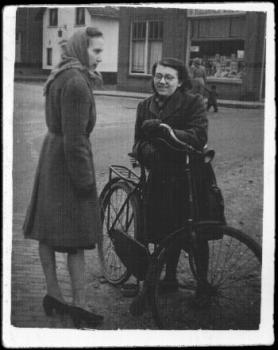Robin Sloan
Clay Jannon has been laid off at NewBagel, where he had worked as an advertising designer. This occurred shortly after the 2009 recession, memorable for being ignored and denied by politicians and megacorporations alike… He waffles about, trying one thing after another until one day, walking along Broadway in San Francisco, he passes an obscure, dimly lit building with a sign saying “Help Wanted”. It’s a bookshop, thinly situated between “Booty’s” on one side and a nondescript edifice on the other… Entering on impulse, he is addressed by Ajax Penumbra, the owner/operator, briefly questioned, and subsequently hired to work the night shift. Clay rapidly discovers peculiarities. Very few customers enter and when they do, it’s to exchange a book they bring with them for another one in the stacks. The bookstore is separated into two areas: a smaller set of shelves in the front featuring well-known and popular titles commonly sold to the public, and a rear section, much larger, both deep and tall, in which thousands of volumes, thick, dark and heavy, are located. Clay gets to recognize the very few visitors to the rear area, as their sole interest is to exchange the book they’ve brought with another from the dark zone, lurking menacingly toward the rear. Mr. Penumbra explains, when queried, that these people are on a mission, and Clay later discovers that each person is trying to decipher the code in which the individual books are written. When they finish with one volume, they exchange it for the next one on the shelf. This procedure seems to have order, with a serial progression covering all the books in that area. Each decoder/person apparently is at a different stage in the series… Intrigued by this, Clay gets together with his room-mates, one a computer programmer and the other a miniature model maker, and they decide to attempt, conjointly, to design a computer program that would make a three-dimensional image of the entire store, as seen from the front window. They acquire enough information to enable them to include several generations of user/decoders as they follow the imaginary lines connecting and revealing the linear progression of each participant in their chronological pursuit, studying volume after volume. Finally they run the program and it reveals a picture of a man: looking through the front window, the whole place produces a ghostly image of a face not unlike that of Mr. Penumbra! This requires, no, demands, explanation, and Mr. P co-operates: these “customers” belong to a club dating back about 500 years, called the “Unbroken Spine” fellowship. It was started initially after the death of Aldus Manutius (actually the figure revealed in the computer program) in the fifteenth century. He was the first printer of the Greek and Roman classics, and at his death left a CODEX VITAE, a secret book which supposedly, if decoded, gave the secret of immortality. The bookshop and it’s fellows all over the world, with headquarters in New York, are dedicated to decoding this book; the method they’ve chosen requires the members to practice deciphering each book that 500 years worth of affiliates have written, compiled from studying the original text of Manutius’s. Not only that, each fellow has written, in code, every possible detail they could think of from their own lives, as any tiny fact might lead on to the interpretation of the C.V.
Well, things get complicated. More. It turns out there is a master library in New York in which members who have completed decoding all their assigned volumes graduate to, as sort of assistants to the head librarian, Corvina. This “reading room” is also where the C.V. is located, which, even after all the long years, has never been deciphered. The Master is desperate to do this, as he’s getting older and wants immortality. NOW. All the plotters, Clay and his friends, travel to New York and invent a plot to copy the C.V. Clay does the dirty work, sneaking into the library and photo-copying the book and almost getting caught, but escapes by the proverbial skin of his teeth. Once the crew has the copy, they return to Google village, south of San Francisco, and convince a sometime girl-friend of Clay’s to use the computing power of the tens of thousands of Google machines, world-wide, to break the code. After some finagling, the process is instigated, and… you guessed it, the massive computing power of twelve bajillion computers is unable to decrypt the code.
After waffling around some more, Clay realizes that the only clue left they have is the font of Gerritszoon type that has been lost for a hundred years. This font was invented by Manutius, and is apparently irreplaceable, being the original used by A.M. himself. Clay finds a few clues and ends up locating the font of “punches”(the individually carved stamps for each letter) in a museum warehouse in Nevada. And examining the font in detail, through a microscope, he makes an astonishing discovery… As you’ll discover when you read the book… sorry, haha..
I was pretty well convinced that modern books were categorically bad and unreadable but this one has turned my mind around. It was witty, informative, complicated, entrancing, and eminently satisfying. I’d recommend it to all. I’ll look for more of Sloan’s work. It was a lot of fun…






